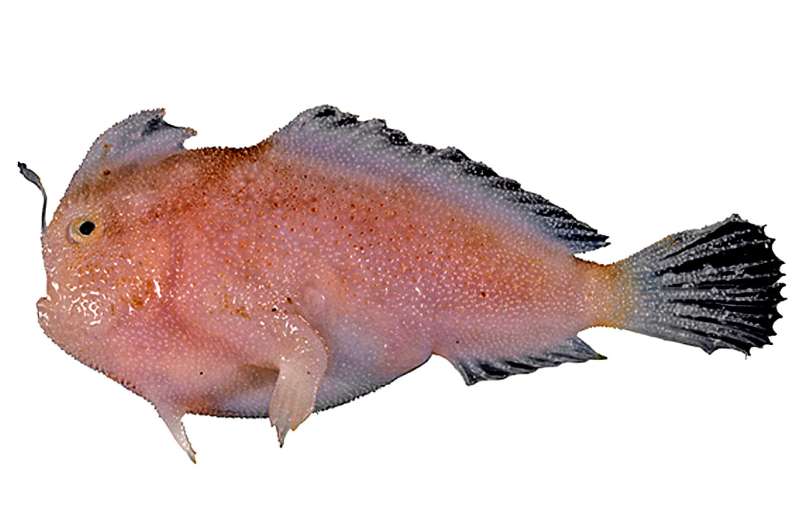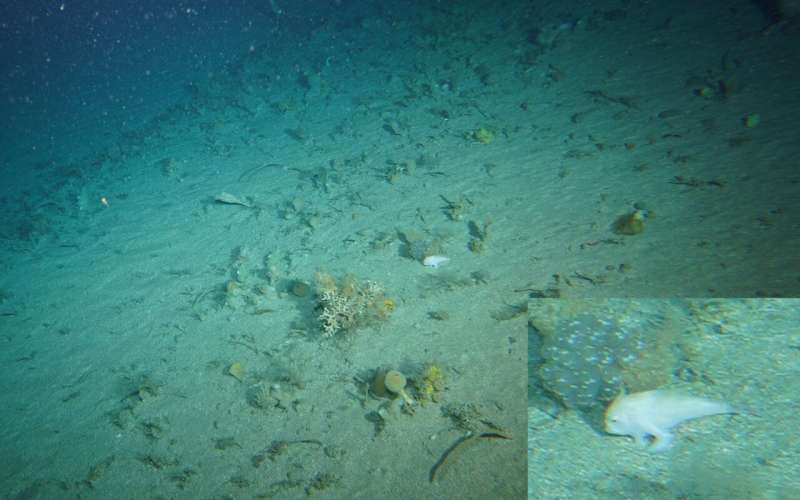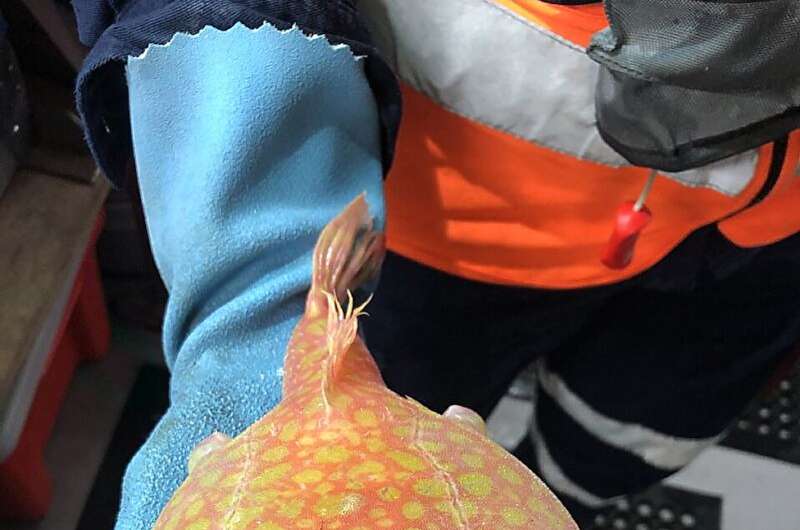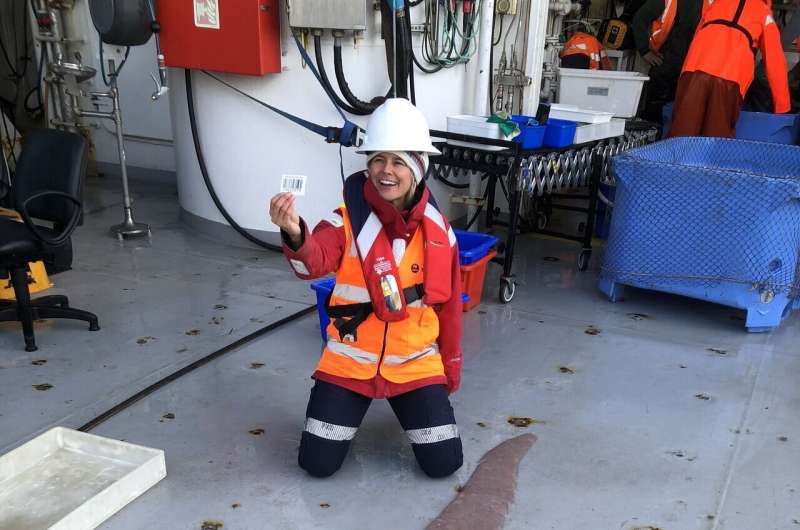This article has been reviewed according to Science X's editorial process and policies. Editors have highlighted the following attributes while ensuring the content's credibility:
fact-checked
trusted source
proofread
Rare handfish spotted for first time in 25 years

Handfish are notoriously hard to find. These camera-shy creatures are coastal anglerfish with a narrow distribution in southeast Australia. There are 14 species, with seven endemic to Tasmania and the Bass Strait.
Our scientists spotted one during a recent voyage on our research vessel (RV) Investigator.
We believe the species is one that was last seen more than 25 years ago: a narrowbody handfish (Pezichthys compressus).
Using RV Investigator's deep tow camera system, the suspect was found at 292 meters depth, northeast of Flinders Island in Tasmania.
The narrowbody handfish is a demersal species, or groundfish, found off southeast Australia. It was first discovered by us in 1986 and was last seen in 1996. It's known from only two specimens in our Australian National Fish Collection.
A needle in a haystack
We found the narrowbody handfish on the CSIRO-led South-East Australia Marine Ecosystem Survey (SEA-MES) RV Investigator voyage in July.
Marine ecologist Dr. Candice Untiedt was onboard and identified the tiny creature in the deep tow camera's images.

"I was pretty excited to find the handfish. I know that this is a rare and special fish. And that the chances of seeing one in this environment and capturing it on the deep tow camera are very rare. It's an important discovery," Candice said.
"Handfish have a very distinctive shape and features so I was pretty sure it was a handfish. But I was lucky to have my colleague Carlie, who is a handfish expert, onboard to confirm my suspicions."
Before boarding RV Investigator, research technician Carlie Devine collected 20 critically endangered spotted handfish (Brachionichthys hirsutus) for our captive breeding program.
"I was really hoping to find a deepwater handfish on our cameras during this voyage. To find one so early on in the trip was incredible," Carlie said.
"We suspect it's a narrowbody handfish. But this handfish is much bigger than the two we have on record and is about 100 kilometers away from its current known location. We can't be 100% sure which handfish species it is. This is as close as we can get without seeing others or collecting a sample fish."
Over the past two decades, we have been actively conserving a more well-known species of handfish, the iconic spotted handfish.
We hope the spotted handfish that we collected in July for our captive breeding program will breed. Then next year we can release the juveniles back into the river to keep populations robust and thriving.
Surveying areas for the first time in 25 years
The month-long SEA-MES voyage repeated a survey of the marine waters of southeast Australia undertaken 25 years ago. The voyage departed from Hobart and traveled to the south coast of New South Wales.
Chief voyage scientist Dr. Rich Little said they were trying to determine how climate is affecting marine parks and fisheries.
"The marine waters of southeast Australia are warming at four times the global average," Rich said. "Species are shifting their distributions and marine habitats are rapidly changing."
Rich said anecdotal evidence from commercial fisheries indicated that the ecosystem has changed.
"Despite reduced fishing pressure, fishers are not catching what they used to and stock abundances appear to be declining. And over-fished species that are under rebuilding plans are not recovering as expected."
"This survey will help us determine what has changed in the marine ecosystem since it was last surveyed in the 1990s. We can measure the properties of the regional ecosystem to determine why any changes in the ecosystem have occurred."
During the voyage, our scientists used a deep tow camera system to sample sites to understand what has changed.
We analyze the video and still imagery onboard to characterize and describe the benthic (seafloor) habitat and fishes at that site.
This is a key part of increasing our knowledge and understanding of the habitat, benthic fauna and fishes that occur in these areas, which cannot be sampled by any other means.
And during the voyage, the team made some exciting discoveries.

They found an extra ten species that weren't seen in the previous survey. And made some colorful finds like a tassled coffinfish (Chaunax fimbriatus), a species of sea toad.
They also caught more small pelagic (open ocean) species like jack mackerel, blue mackerel and red bait than in the previous survey.
The researchers were excited to find an intact pyrosome in Freycinet Marine Park.
"Pyrosomes are a cylindrical or cone-shaped colony of animals. Two species are known in Australia and we encountered both during the voyage," Rich said. "We usually see them in pieces in our nets."

Candice said voyages as part of large-scale projects like SEA-MES are vital to our understanding of ecosystems and biodiversity.
"They give us an unprecedented opportunity to collect data. We can discover what ecosystems look like, the biodiversity they hold and how they respond to change and pressure over time," she said.
The researchers also discovered there was a moderate marine heat wave off eastern Tasmania, near Flinders Marine Park and Freycinet Marine Park, indicating relatively warm waters during the course of the voyage.
The next step is to analyze the data collected during the voyage. Then the researchers will prepare to repeat the survey in 2024 and 2025.
Provided by CSIRO





















